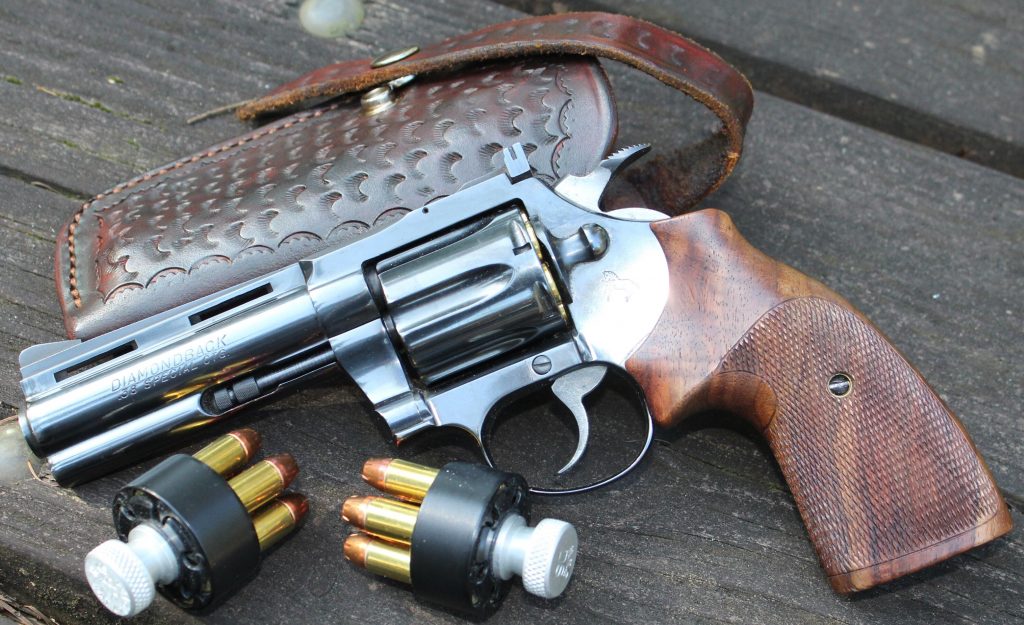
By Dave Workman | Editor-in-Chief
Like its larger sibling, the legendary Python, the Colt Diamondback developed something of a cult following over the years, no doubt aided considerably by its screen appearances in Steve McQueen’s Bullitt and John Wayne’s McQ and Brannigan.
It was also on screen briefly in a Burt Reynolds flick, Sharky’s Machine, and it may have done time in some television series’.
Chambered in .38 Special and .22 Long Rifle, it came with barrel lengths of 2 ½, 4 and 6 inches, all featuring a full lug, vent-rib barrel design made famous by the Python in 1955. The Diamondback made its debut in 1966, with adjustable rear sight, wide target-type hammer and flat top frame. Built on the “D” frame, some folks consider it a beefed-up Detective Special with frills designed to capitalize on the Python’s stunning appearance.
With one of the smoothest double-actions I’ve ever experienced, the Colt Diamondback is a terrific carry gun for folks who like the .38 Special in its standard range (you don’t want to use Plus-P ammunition), and for those who own one in .22 LR caliber, it earned a reputation as a dandy plinker, and could also put a rabbit or grouse in the stew pot when called upon.
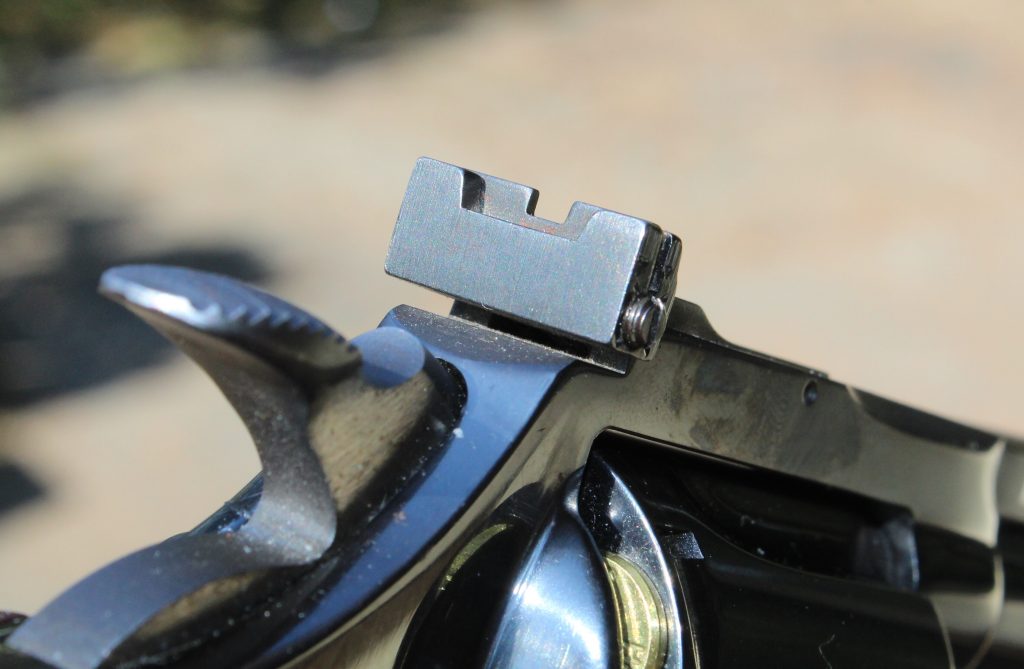
I shopped around for one for several years, watching prices climb uncomfortably out of my budget realm. I’ve seen them for sale at gun shows in recent months for as high as $1,200, and those weren’t even in pristine condition. Mine was acquired almost on a fluke about ten years ago as part of an estate sale. I was notified by an acquaintance on an Internet chat group about this 4-incher offered for sale for a remarkably low price, and I pounced.
Once all the paperwork was complete—alas, the original box was nowhere to be found—I took delivery of what has become one of my favorite carry guns. The bluing was still about 90-95 percent, and with 125-grain JHP bullets, I’ve been able to punch a lot of holes in tin cans, and occasionally carry it along as rabbit medicine. Recoil is easily manageable.
One thing I’ve noticed about the Diamondback, and the Python for that matter, is a tight lockup of the cylinder at the moment the trigger is pressed. This solid lockup aligns the chamber mouth with the forcing cone to enhance accuracy, something to which I can attest.
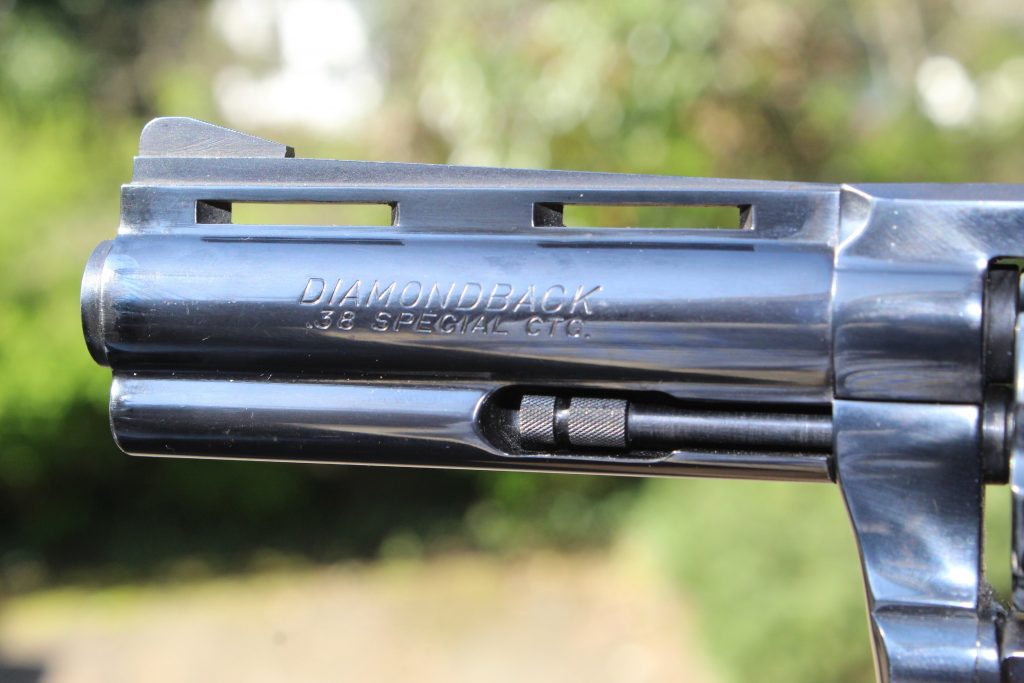
About the only change I’ve made over the years was to mount a set of Herrett’s stocks to replace the factory set, which I keep in the gun safe. I picked Herrett Detective stocks, which fit my hand very well and hide nicely under everything from a casual jacket to a photographer’s vest or down vest, which are always stylish in the Pacific Northwest where I reside.
The Diamondback uses the same HKS “DS” model speed loaders as the Detective Special and Cobra, and I always have a couple in my pocket when carrying this little sixgun.
Stoked with Hornady JHPs, the Diamondback can be a formidable tool in an emergency. As noted earlier, the Diamondback should be loaded only with standard-pressure .38 Special ammunition, so anyone shopping around should pay careful attention and not mistakenly purchase +P rounds.
Handloading the .38 Special
Since I have no intention of beating my Diamondback into a plowshare with hot ammunition, I broke out several loading manuals to work up some standard-pressure handloads.
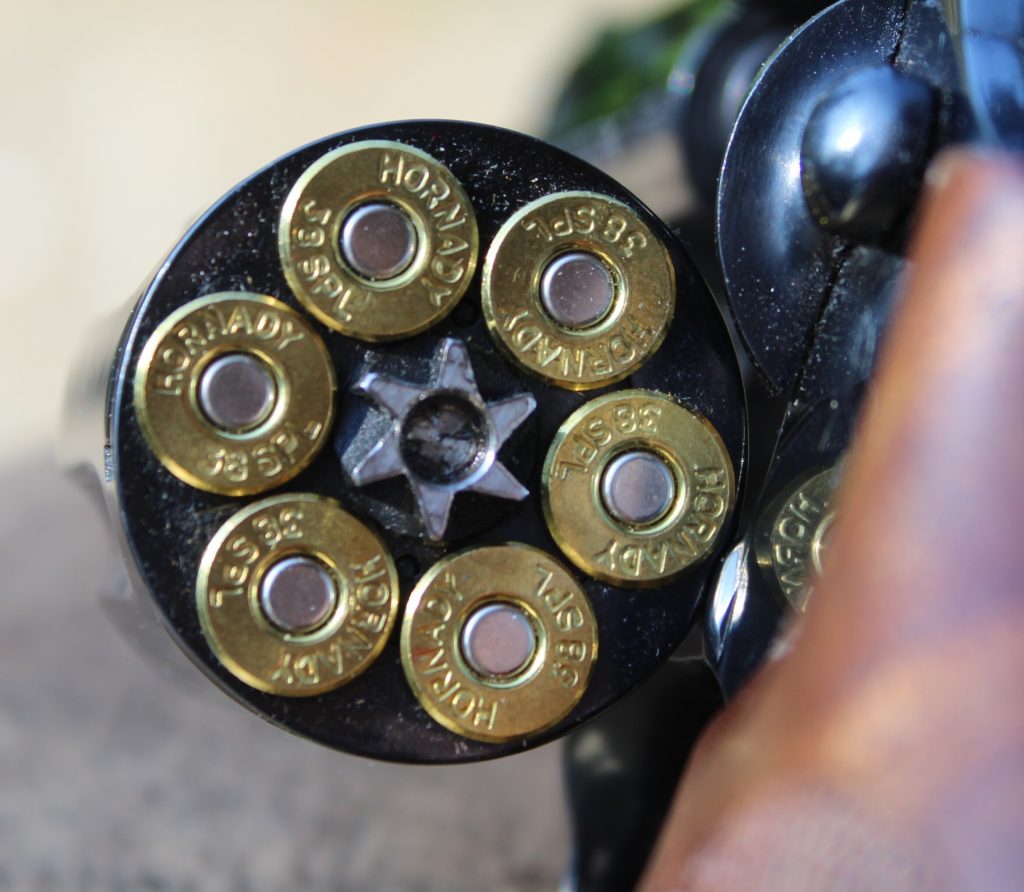
The neat thing about the .38 Special cartridge is its versatility, which is underscored by the number of different bullet weights and types available to the handloader. Over the years, I’ve experimented with different propellants and bullet weights in this caliber, and have settled on just a couple for consistency, though I’ll make a few suggestions.
My personal powder preference is Hodgdon’s HP38. It has always delivered the goods, no matter which bullet I’m using, whether a JHP or lead semi-wadcutter.
However, I’ll say for the record that I’ve had decent results using CFE Pistol, AutoComp and Titegroup, and one can find loads using all of these propellants in the Hodgdon Annual Manual or in loading manuals published by any of the bullet makers, including Nosler, Speer, Hornady, Sierra and others.
While I prefer the 125-grain JHP, some time back I acquired a lot of 110-grain JHPs, for which I’ve discovered something of a fondness. Propelled by 5.5 grains of HP38, a 110-grain Hornady XTP can warp out of the muzzle at 1,096 fps, according to the Hodgdon Annual Manual. I back my loads off at least 0.10-grain from whatever maximum powder charge is listed, no matter who does the listing, and I’ve never worried about over-pressuring my loads. As it turns out, milder loads are often the most accurate.
For the 125-grainer, depending upon the bullet, the handloader can expect to produce loads that can clock into the 900 fps realm with a maximum charge of HP38.
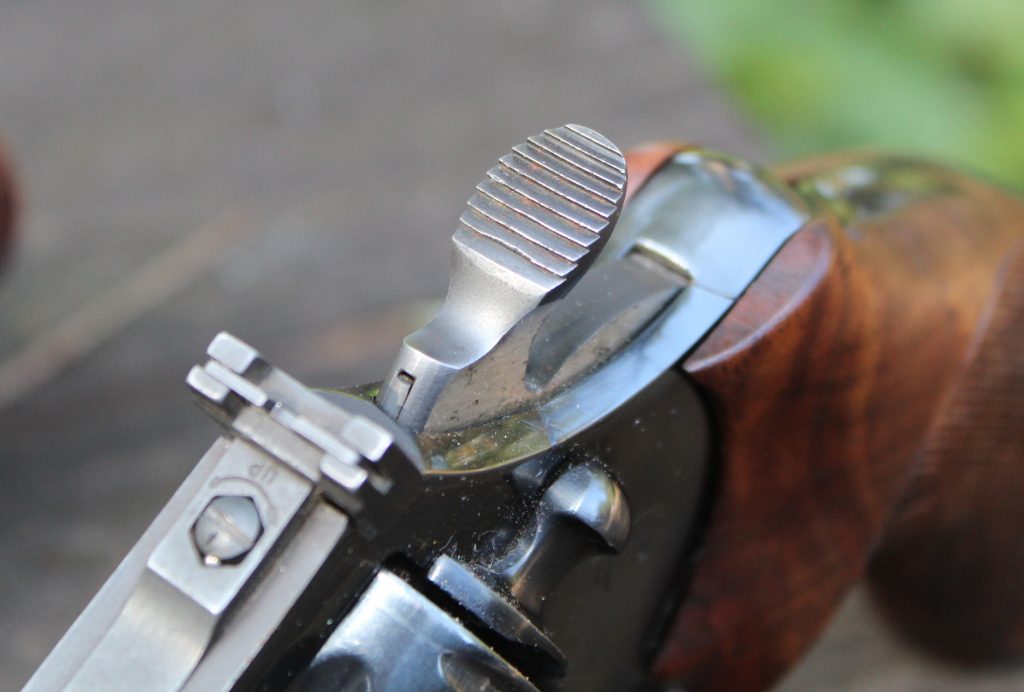
If you load your own, always approach listed maximum loads with caution and watch for signs of excessive pressure. So far, I’ve never seen that with any of my .38 Special loads, and I’ve carefully avoided delving into the +P handloading realm, deciding early on that if more horsepower is needed from that bore size, I’ll simply grab a .357 Magnum.
For my .38 Special loads, I use CCI-500 standard small pistol primers. They have never failed through thousands of uses in .38 Special or 9mm back in the days I was loading that cartridge.
Into History
The Colt Diamondback enjoyed a 22-year run, which isn’t really that bad, considering much of its later life was simply overtaken by the 9mm semi-auto eruption.
The .38 Special was never the end-all defensive round, but it did stop more than a few fights in its heyday, out of Diamondbacks or other 5- and 6-round revolvers.
When it left the production line in 1988, the Diamondback had established itself as a performer capable of consistent accuracy. While one might not wish to subject such a collectible handgun to the rigors of outdoor use, in my book a handgun earns its keep, it doesn’t gather dust. Even my Python is not a safe queen; it still enjoys occasional range visits.
In the right holster, the Diamondback would make a good trail gun. It’s light, fires a serious cartridge, is accurate and reliable.
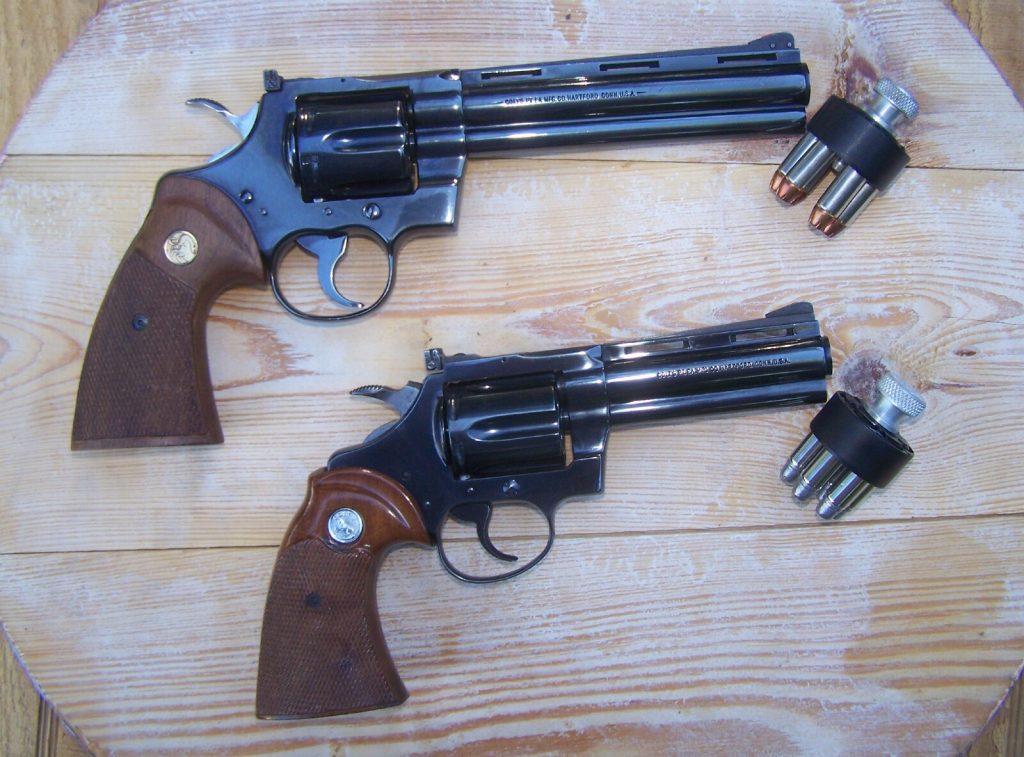
Now that Colt has begun resurrecting its snakes—Cobra, King Cobra and Python—handgunners are waiting to see whether the Diamondback will also reappear.
There is much to like about the Diamondback, which is one reason I suspect they garner premium prices on the used gun market. I know a guy who owns a 6-incher in .22 LR caliber, and my guess is he could sell that for enough to buy a couple of currently-produced 9mm pistols with enough left over for dinner.
In any of its configurations, the Colt Diamondback was, and remains, a keeper. I’m definitely keeping mine!



